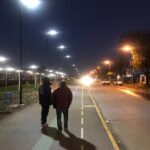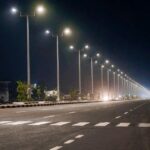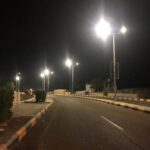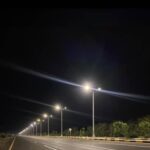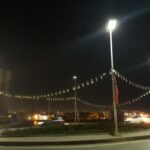The LED solar lights are among the most popular lights in the world and they have greatly replaced traditional systems over the course of a decade. These lights are much more efficient as compared to traditional lights and they can perform high-quality experience to the users while also reducing the power consumption during the process. The dissipation of energy in LED lights is also much lower as compared to incandescent or high-pressure sodium (HPS) lights due to which their use is common in parks and street light systems.
The solar park lights LED are capable of illuminating large areas providing convenience to people at night. In parks, these lights have to illuminate large areas due to which they also need to have a large coverage area. There are various parameters that have an impact on the performance and coverage area of solar park lights LED.
Therefore, in this article, we will discuss different technical parameters in common language in order to properly guide our readers. Some of the important solar park lights LED parameters are as below:
Module Luminous flux
It is the Luminous flux of an LED. Its value is usually available on the specification sheet of the LED in terms of lumens. The module Luminous flux generally tells about the overall Luminous flux that and LED generates when the operating temperature of the system is 25 degree Celsius. The Luminous flux has a direct relationship with the brightness of the light and in case the Luminous flux is greater than the brightness of the light will also be greater and vice versa.
Luminaire luminous flux
It gives an account of the luminaire of the solar park lights LED. The value of luminous flux is also available on the specification sheet of an LED in terms of the lumen. The difference between module luminous flux and luminaire luminous flux is that it gives an account of the overall flux that is present in luminaire and it does not have a relationship with the operating temperature of the LED. It also has a direct relationship with the brightness of the light.
Module connected wattage
When LED operates, it consumes a certain amount of power. The amount of power that an LED uses in order to carry out its operation is available on the specification sheet in terms of module-connected wattage. Therefore, greater the value of module connected wattage, greater will be the power that and LED uses and vice versa. The value of this parameter is available in terms of watts.
Luminaire connected wattage
It is also a measure of the power that led uses during its operation. However, the difference is that this value is calculated after the LED has reached the thermal stabilization level. It is a more comprehensive measure of the power consumption requirements of an LED as it also takes account of various other elements that are operating alongside. The value of luminaire-connected wattage is available on the specification sheet in terms of watts.
Luminaire Luminous efficiency
It gives an account of the efficiency of the operation of the LED. It is basically a ratio of the luminous flux emitted by an LED light and the power consumed for the purpose. Therefore, an LED that will have a higher value of luminaire luminous efficiency will perform much better as compared to the one that has a lower value. An LED, ideally, should be able to generate more flux for the amount of energy that it consumes.
Colour temperature
When the LED operates and emits light, then some amount of heat is also present in the luminaire. The amount of heat that is present in the light is generally available in the specification sheet in terms of colour temperature. There are different measures of the colour temperature i.e. warm white, neutral white, and daylight fight.
Colour rendering index
LED has a specific colour but in case it is exposed to another source of light then the perceived colour of the light can appear to be different. Colour rendering index is the level to which light appears to be of a different colour when compared to the normal colour of the light. This is also an important parameter since the colour of the LED should be consistent throughout your operation and external factors should not have any effect.
Ambient temperature
It is the maximum temperature at which the LED should operate normally and a deviation from this temperature then it will have an impact on the performance. It is highly important parameters since a greater temperature can also have any impact on the help of the light. When the light continues to operate at a higher temperature then there are chances of damage to the light. Therefore, the ambient temperature should be higher so that the light can operate normally even under extreme weather conditions.
Service life criterion
LED like everything else in this world have a life and they may start to perform early or become permanently damaged after a certain period. In case of LED, they do not go out of order directly but instead, their illumination starts to drop before they go completely black. Therefore, and LED should have a creative service life which will provide a greater value of the investment to the consumers. However, the failure of the LED due to external factors is not accounted for in this criterion, as it is the natural performance of the LED that is considered supreme.
Voltage
LED has an operating temperature. The value of the operating temperature of the LED is available on the specification sheet in terms of Volt (V). It is also the maximum voltage at which the LED should operate, as a higher voltage will have a negative impact on the performance and life of the LED. Similarly, at a lower voltage level, the LED might not be able to perform at a similar level as it would in the case an appropriate voltage source was available.
Solar park lights led: Conclusion
LEDs are one of the most important components in a solar parking lighting system since they are primarily responsible for the illumination of the area. There are a number of different parameters, which have an impact on the performance or output of the LED and consequently the lighting system. Some of these factors include Luminous flux, wattage rating, luminaire efficiency, colour temperature, colour rendering index, ambient temperature, service life, and voltage. Therefore, we recommend people to analyse the solar lights LEDs from all these different perspectives and make an informed decision with respect to their requirements.



